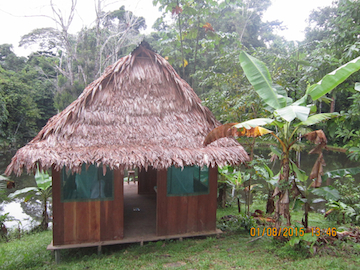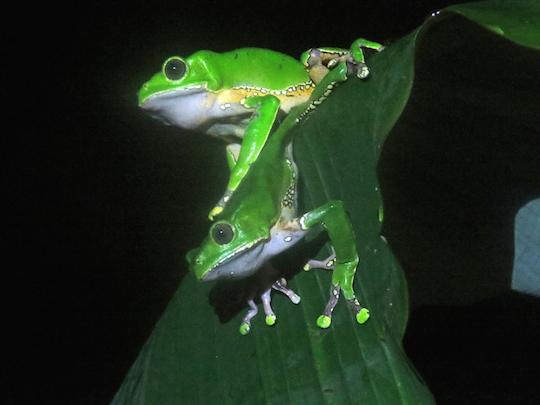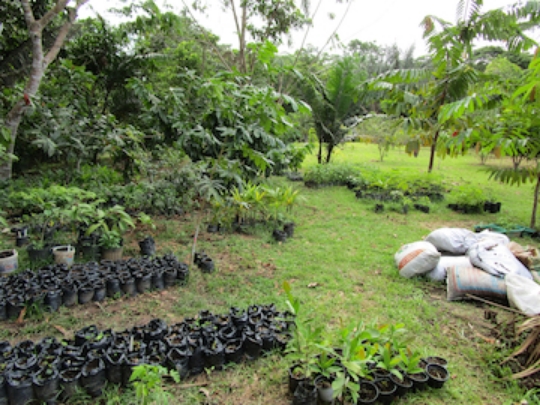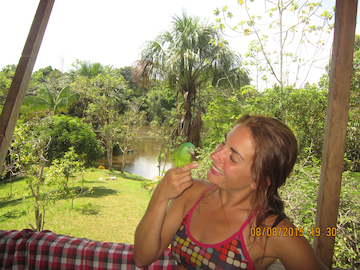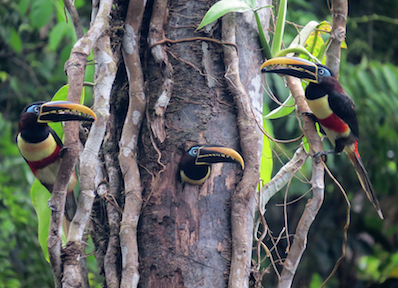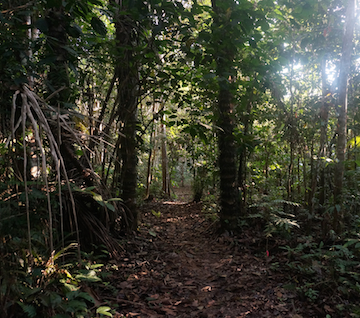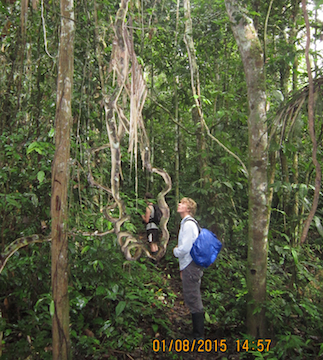Field Stations & Fleet
MT Amazon Expeditions (MTAE) has an exclusive agreement for the use of the field stations and fleet of Project Amazonas (PA), a joint American-Peruvian non-profit organization dedicated to the protection of the Peruvian Rain Forest and its people through conservation, research, education, medical assistance and sustainable development in the Amazon. Project Amazonas maintains three field stations: Madre Selva Biological Station (est. 1994), on the Orosa River, Santa Cruz Forest Preserve (est. 2008), on the Mazan River, and a new site, the Area de Conservacion Tapiche (management assumed in Nov 2022). Since all sites are accessible only by boat, Project Amazonas owns and operates boats for researchers, academic groups, and medical service expeditions.
Profits from MT Amazon Expeditions are invested back into Project Amazonas, and play a critical role in maintaining facilities and boats. Traveling with us means that you are directly contributing to the protection of the Amazon rainforest.
Madre Selva bIOLOGICAL STATION (MSBS)
Founded in September 1994 as the first of Project Amazonas’ protected areas, the Madre Selva (Mother Forest) site maintains 192 hectares (about 480 acres) of land, and through an agreement with the neighboring Yagua indigenous community of Comandancia, Project Amazonas manages an additional area of community property of about 400 hectares (1000 acres) for use by researchers and other visitors. Madre Selva provides access to a wide variety of terrestrial and aquatic habitats, and due to its distance from Iquitos, also neighbors more traditional indigenous and campesino cultures.
The station is located 150 river km (90 river miles) east of Iquitos on the south bank of the Rio Orosa, (3,37'14.5"S, 72’14.48.5'"W) with facilities overlooking Tunche Caño (Ghost Creek), a tributary of the Rio Orosa, a black-water river. This lower portion of the Rio Orosa is an ancient channel of the Amazon, and during high water, Amazon River water enters the Orosa at several points up- and down-stream from Madre Selva, imparting a strong seasonal white-water influence to this otherwise black-water river. Land near the Orosa River and along Tunche Caño is seasonally flooded (varzea and/or igapo forest), while further inland the terrain is a mixture of low rolling hills and fairly steep ravines. Across the river is an extensive area of swamp forest and floodplain lakes, and at moderate to high water there is easy access to the sandbars, mud-flats, floating meadows and river islands of the Amazon River itself. Local communities cultivate corn, yuca (manioc) and camu camu (a native fruit) on the floodplain of the Orosa River upstream and across the river from the field station. In upland areas behind communities, plantains, dry-land rice and other crops are cultivated. Small scale animal husbandry occurs in some communities.
Madre Selva can house up to 30 persons. A large screened "dorm" building with raised wooden floor and well-ventilated roof provides space for up to 16 persons, while 6 smaller shelters (screened tambos) with raised wooden floors can house 2-3 persons each. Beds with mosquito nets are provided for protection from insects, and mattresses, linens, and towels are included. Modern flush toilets and showers (four each) are linked to a septic drain field. A two story classroom structure doubles as a laboratory and general meeting space. In 2020, a new spacious kitchen and dining hall was finished, and includes an upstairs “lounge” area for comfortable chairs and hammocks with views over Tunche Caño and the surrounding forest.
Approximately 15 km of trails provide access to primary and secondary forest of varying ages. One long trail leads directly into the extensive unbroken forest that lies between the Rio Orosa and the Rio Yavari on the Brazilian frontier, approximately 75 km distant. Concrete paths link the main buildings, and the station clearing area is planted useful fruit trees as well as with ornamental native plants and native orchids. Electricity is provided by a generator in the mornings and evenings, but we hope to provide 24/7 electrical supply in the near future with solar panels and battery bank.
Santa Cruz Forest Preserve (SCFR)
Located on the Mazan River upriver from its junction with the Napo River, Santa Cruz protects the closest expanse of old growth forest to the city of Iquitos. A reserve at the site was envisioned in 2007, when construction began on a highway linking Iquitos at the Nanay River to Mazan. The entirety of the road was quickly cut, with much of it slicing through previously inaccessible virgin forest. Since landowners are permitted to cut forest on their land up to 1 km from a river or road, we foresaw immediate and widespread forest destruction.
With the help of generous donations, Project Amazonas was able to purchase several lots on the road in 2008. Through fundraising efforts and generous contributions from MT Amazon Expeditions clients, PA was able to purchase riverfront lots providing a new protected corridor from primary rainforest to the river - an extremely rare opportunity, and unique for an area so close to a highly populated city. The initial road project quickly flopped, a failure of mismanagement, poor planning, and no maintenance. The road became overgrown and impassable. In 2025, however, the road was cleared again but is passable only after several days with no rain - we hope history will repeat itself and nature will reclaim the land.
For being geographically close to a major city, this 600 acre site is a biodiversity hotspot. On one of our first visits, we encountered two individuals of Microcaecilia (one of those very odd legless amphibians), a new record for Peru; and in January 2015, a rare frog (Pristimantis orphnolaemus), previously seen only in primary forest in Ecuador was found for the first time in Perú at the Santa Cruz site - just a dozen meters from the river, and on land that had been previously used for agriculture. Camera traps have revealed a surprising diversity of mammals that are rarely seen. Visit the Project Amazonas website blog to see some of that footage.
Facilities include a house on the river (sleeps 6), affectionately called "The Taj", with additional facilities for large groups located about a mile inland. In 2021, volunteer housing was completed near the Mazan River with space for 6-9 persons in large rooms on the second floor. Storage area, caretaker housing, kitchen and bathrooms are located on the first floor. Recently we have worked to make the facilities energy friendly and powered by solar panels.
From 2010-2020, a reforestation program was established to return degraded land on the riverfront back to a viable forest, with between 1500 to 2000 seedlings of more than 45 native species planted each year. Close to the river, there is an arboretum featuring Amazon trees of traditional, medicinal or commercial value. This is an excellent location for birdwatching due to its more open nature.
From Iquitos, travel to the SCFR takes about two hours by speedboat, including an overland transfer to the town of Mazan, where a second boat ride takes you the remaining distance to the field station.
ÁREA DE CONSERVACÍON TAPICHE (ACT)
Also known as the Tapiche Reserve, this site came under the management of Project Amazonas in November 2022. ACT is renowned for its abundance of wildlife, including important populations of the globally endangered red uakari monkey, giant otters, black caiman, harpy eagles, and much more. As this site is 400 km south of Iquitos, it takes 11-12 hours to access the site. The original facilities have been largely replaced with durable, functional structures and a network of trails (some trailheads accessible only by boat) have been established. PA recently (Dec 2025) obtained formal private conservation status for nearly 40,000 acres (>16,000 hectares) at the site. More information about visiting the site can be found at the ACT website.
